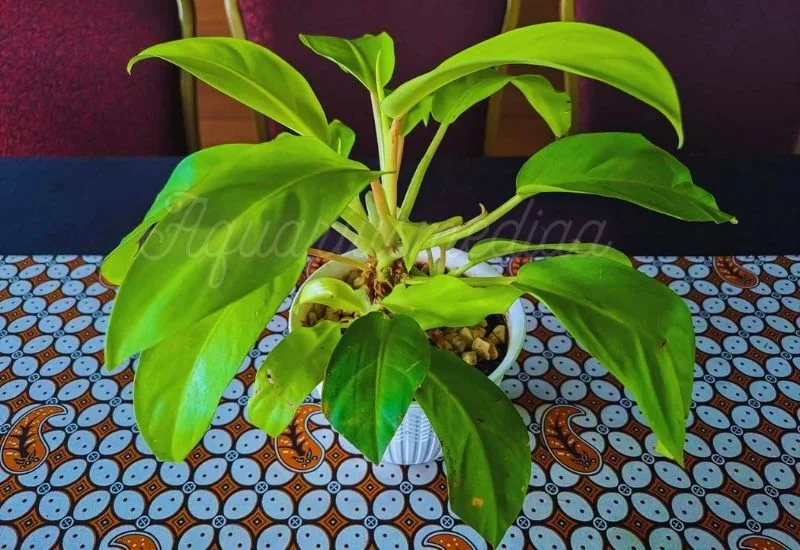In this blog post, you’re going to learn how to easily propagate and care for Philodendron Moonlight.
This is a comprehensive guide covering reliable information about different aspects of this cultivated variety.
In this post, I’ll cover:
Interesting Facts
Propagation
Repotting
Care
And
Solutions to Common Problems
So, if you are looking to propagate and care for Philodendron Moonlight, this guide is for you.
Fun Facts
| Common Name | Philodendron moonlight, lime philodendron |
| Botanical Name | Philodendron ‘Moonlight’ |
| Family | Araceae |
| Plant Type | Perennial |
| Fruit | Very rare small berry-like |
| Mature Size | 1-2 ft. height and width |
| Sun Exposure | Partial (Bright and indirect light) |
| Soil Type | Loamy and well drained soil is required |
| Soil pH | Acidic |
| Native Area | Central and South America |
| Toxic | Toxic to human and pets |
| Growth | Fast growing and Non-trailing |
The Philodendron Moonlight is a selection of Philodendron hederaceum hybrids characterized by bright lime-green leaves. It is much easy to care as compared to other members of its family.Moonlight also requires indirect sunlight and the humidity level to be moderately high, so it can be a perfect plant for low lit rooms.
Unlike the typical trailing philodendrons, this philodendron does not trail and is a non-vining plant which makes it bushier. The amount of growth is somewhat minimal during its vegetative stage in Philodendron Moonlight. This plant may be able to year-round growth with the right environmental conditions.
Flowers and Fruiting
Like the most of philodendrons, P. Moonlight is not capable of blooming at home. It bears a spathe and spadix common to the plants that belong to the Araceae family. The spathe is a type of leaf which coils around the spadix unto which the small flowers are seated.
These flowers are white or pale green and flowers are mostly produced in fully mature plants which have grown in optimum conditions for several years.
Fruiting is much more rare than the flowering. When fruit is produced, it is in tiny drupes in the margin of the sepal (which develops from the spadix after pollination).
These fruits are usually small and are hidden from view and thus they may not add on the aesthetic value of the plant. Out in the wild, the fruits are used in the propagation of the plant. They contain seeds but in this context growing the plant indoors the fruits are rather useless.
Benefits
Air Filtration
Moonlight helps in the removal of formaldehyde, benzene, and xylene gases from the air hence making the air purifying qualities of the plant.
Bright Leaves
The beautiful lime green foliage improves its color and visually refreshing feel to the interior.
Low Maintenance
The Philodendron Moonlight, does not demand a lot of attention and maintenance. It is best suitable for low to medium light and can handle some degree of forgetfulness and is therefore suitable for individuals with a very busy schedule.
Compact Growth
Compared to vining philodendrons, Moonlight remains an upright and dense plant. So, it’s ideal for areas with limited space or placed on the table.
Adaptability
This philodendron can grow under low light level and fluctuating humidity hence it could be grown anywhere in the indoors.
Durability
Lingering and remaining green is a prominent characteristic of its leaves.
Pet Resistance
It is relatively immune to some pests such as spider mites and mealy bugs.
Stress Reduction
Research has proven that having plant species such as the Philodendron Moonlight in your business space or home has a positive impact on beahviour and productivity.
